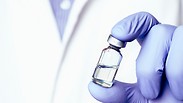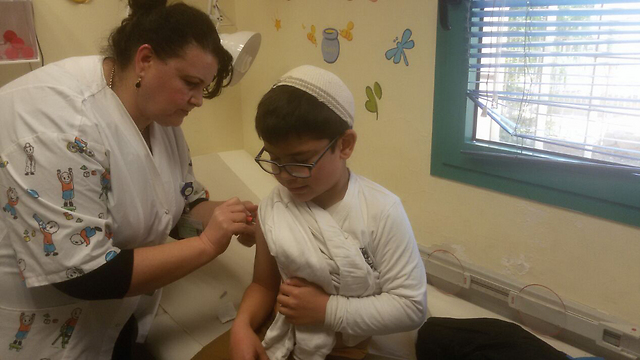
The vaccines are administered to all children unless parents object
Photo: Shutterstock
A recent report published by the Health Ministry found that over the past school year, national health services has vaccinated 1.3 million students between first and ninth grades. The vaccines were administered to all students, except in cases where the parents objected.
During the first grade, the MMRV—a combination vaccine that protects against the measles, mumps, chicken pocks and rebeola—is usually administered. Over the past year, 153,842 first graders were given the shot—amounting to 96.9% of their peers—while the parents of 4,919 first graders—amounting to 2.9% of the first grade population—did not have parental approval and therefore were not vaccinated. This marks a slight rise in percentage who refused, from 96.8% of all first graders who had been vaccinated last year.
During the second grade, the DTap/IPV vaccine is given to ward off diphtheria, tetanus, pertussis and polio. 153,177, or 96.1% of second grade students were vaccinated with it, while 6,145 did not, due to parental refusal. This also marks a rise from 94.9% in the previous year.
129,371 eighth graders were given the Tdap vaccine against diphtheria, tetanus and pertussis last year, while the parents of 6,168 students refused to sign for it. 1,120 ninth grade students who were not given the vaccine during the eighth grade, were also given the vaccine.
A vaccine against the papilloma is given in two intervals, and since 2016 has been administered to both boys and girls duringthe eigth grade. 65.9% of students were given during the first interval, with only 59.3% given the second. The lowest turnout rate was in the District of Jerusalem, at 27.7% for the first interval and 23.8% for the second interval. The North District has the highest turnout rate, with 87.2% for the first interval and 82.5% for the second interval. all in all, 50,000 students did not receive a full-course papilloma vaccine.
The report was found to have the largest gap between the health services provided by the health bureaus and private health providers.
The subjects for health education are chosen with the education staff and provided for students while taking their age into account. Sex education, health and nutrition are included in the curriculum.
In the South district, only 0.4% of students received health education from the state, as opposed to 94.2% of students in the Central District receiving information and service provider Femi, and 94.4% of students in Jerusalem, by health service provider Natali.
Only 6.6% of sixth graders in the South District were provided with health education, compared to 90.7% in the Haifa District and 92.5% in Tel Aviv. There were also disparities with ninth graders, with 0.8% of those in the south receiving health education, compared to 78.5% of ninth graders from the Central District and 79.1% in the Jerusalem District.

















